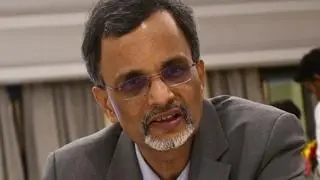Exporters from sectors such as apparel, gems & jewellery, cotton textiles, leather and oilseeds are travelling to Australia this week, as part of a business delegation led by Commerce & Industry Minister Piyush Goyal to consolidate gains from the new opportunities opened up by the India-Australia Economic Cooperation and Trade Agreement (ECTA) signed earlier this month.
The delegation will have meetings with businesses at Melbourne, Sydney and Perth from April 5-8, according to exporters’ body FIEO, which is coordinating with various export promotion councils on the matter. Representatives of the services sector, too, will be part of the delegation.
Related Stories
All about India-Australia Economic Co-operation and Trade Agreement
According to government estimates, trade in goods is likely to almost double to $50 billion in five years“All sectors of exports are likely to benefit from the pact, especially apparel & textiles, leather, engineering, gems & jewellery, and more particularly services wherein India has moved aggressively from a positive list to negative list,” said FIEO President A Sakthivel.
Service professionals are likely to be major beneficiaries of the agreement, including Indian chefs and yoga teachers, besides students who will get post study visas ranging from one and a half years to four years, a statement issued by FIEO pointed out.
Focus areas
With both Australia and India agreeing to start work on expanding the agreement into a full-fledged Comprehensive Economic Cooperation Agreement within the next 75 days, negotiations for liberalising newer areas such as digital trade and government procurement will begin.
“New opportunities will be available in government procurement and digital economy for Indian entrepreneurs and exporters,” the statement said.
While the two countries hope to nearly double bilateral trade to $45-50 billion, from the existing $27 billion, over the next five years, FIEO is hopeful that the target may be crossed much before that.
Under the ECTA, Australia has agreed to provide zero-duty market access for 96.4 per cent value of Indian exports (98 per cent of tariff lines) on the first day of implementation of the agreement. Tariffs on the remaining 113 tariff lines, amounting to 3.6 per cent of India’s exports, will be phased out in five years.
India, on the other hand, will eliminate tariffs on more than 85 per cent of the Australian goods exports immediately, rising to almost 91 per cent in over 10 years.








Comments
Comments have to be in English, and in full sentences. They cannot be abusive or personal. Please abide by our community guidelines for posting your comments.
We have migrated to a new commenting platform. If you are already a registered user of TheHindu Businessline and logged in, you may continue to engage with our articles. If you do not have an account please register and login to post comments. Users can access their older comments by logging into their accounts on Vuukle.